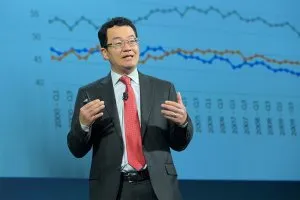
Much is made of growing Asian economies, particularly China. But there is a quietly emerging market on the horizon, one that isn’t making the headlines quite like China but still offers substantial opportunity for real estate agents.
The bubbly marketing slogan for the Philippine Department of Tourism, “It’s More Fun in the Philippines,” suggests the promise of a solid, safe and positive experience. Does the same hold true for the inbound and outbound real estate market?
Nearly all signs point to yes. The Philippine economy is one of the fastest growing in Asia (only China can boast higher growth numbers), an impressive feat considering the devastating typhoon that ravaged the country less than two years ago. With a growing middle class and stronger foreign investment than ever before, things do appear to be quite fun in the Philippines housing market.
What’s Hot: Inbound Investment to the Philippines
Foreign investment – Hong Kong and Singapore used to be the hot markets for Asian investors, but now many are turning their attention (and their capital) to the Philippines with increasing fervor. Several factors are contributing to the influx of foreign investment: prices are rising but still desirable, there is a strong return on investment in the condominium market, loan interest rates are lower than ever, and efforts to cool real estate prices in other parts of Asia (including China, Japan, Korea, and Malaysia) have encouraged buyers to look for new investment destinations. Manila is ranked as the fourth best in Asia-Pacific for property investments this year (after Tokyo, Shanghai, and Jakarta), according to a report by the Urban Land Institute and PricewaterhouseCoopers.
Condo market – Foreigners cannot own land in the Philippines, but they can hold titles on condominiums (up to 40% of a condo development – 60% of the development’s total floor area must be owned by Filipinos), making this an attractive investment option. Inventory is not an issue, as Manila is currently experiencing a condo boom and supply is safely meeting demand. According to JLL (formerly Jones Lang Lasalle), however, it should only result in a “little oversupply.”
Prices are also rising, but they are still below the peak prices that were reached before the global financial crisis. Some fear there are symptoms of a housing bubble in the air, but the overall projection shows no sign of a slowdown.
The Boomer generation – As they enter retirement, members of the Baby Boomer generation (particularly those who moved abroad in their younger years) may look to take advantage of the low cost of living in the Philippines.
“Filipino emigrants still feel a tie to their country of origin,” says Jennifer Tasto of Property Services, Inc., who also serves as the National Association of REALTORS® (NAR) President’s Liaison to the Philippines. “Their family is still there – and there is such a strong tie to family in the Philippines that “family” is loosely defined.”
Low cost of living, ability to use Medicare benefits, improving infrastructure, and tropical climate also contribute to the country’s desirability, according to Tasto.
The appeal of the Philippines is not exclusive to Boomers returning home: multi-national companies are also attracted to the Philippines for expansion opportunities. While it has been long known for its call center operations, these corporations are now finding they can get quality employees at far lower labor costs.
“There is a quality education system producing tech-savvy, English-speaking graduates, so they can hire really good people at a much lower cost,” says Tasto.
Outbound Investment
A booming economy and rapidly growing middle class offers new possibilities to Filipinos with more wealth. As they acquire more capital and seek investment opportunities, many are turning to the United States for a safe, secure investment.
“When purchasing a property overseas, Filipinos are looking for a safe investment. They want to be assured that what they are buying, is what they think they are buying,” said Tasto. “The United States offers safety and stability – both physical safety as well as transaction safety.”
Recent data from realtor.com® International (www.realtor.com/international), as published in NAR’s 2014 Profile of International Home Buying Activity, reflects a strong interest of Filipinos searching for homes in the United States. According to the data, prospective home buyers from the Philippines ranked #12 of countries searching U.S. properties in 2013. This is impressive considering that it’s one of the only “developing” countries on the list of the top 15 countries searching properties in the United States.
Areas of Interest
Many of the top U.S. cities of interest in the United States are not surprises – Las Vegas, Los Angeles, Houston, San Diego, and San Francisco comprised the top five U.S. markets searched by Filipino buyers. This supports data from the Migration Policy Institute, which shows that 45% of Filipino immigrants reside in California.
Filipino interest is spread to more than just coastal cities, however. Several smaller, suburban areas also popped up on the list of destinations searched, including Westchester Center, Conn., Ashland Ala., St. Paul, Minn., and Southgate, Mich.
Top U.S. Cities searched by the Philippines on realtor.com in 2013
(Index = 12: Of major interest; Index = 0: Of no interest)

Source of data: realtor.com®
What this means for agents
The influx of Filipinos in the United States might surprise American agents, but those who are prepared to work with these buyers will find this to be a lucrative and loyal source of business.
“Many people think Filipino buyers will only work with other Filipinos,” says Tasto. “This is not the case. Show that you are a good agent, and you will attract their business. It is not all DNA.”
Tasto also points out that the referral system is a new concept in the Philippines. As NAR President’s Liaison to the country, she has worked hard to educate agents there on the merits of the system. “We tend to take the U.S. referral system for granted,” she says. “It’s a new concept in the Philippines, but they are eager to work with American agents. There is a lot of opportunity to work together.”
Agents in the Philippines also value the Certified International Property Specialist (CIPS) designation, offered by NAR. “There is a strong CIPS group in the Philippines that wants to be the source for luxury business,” says Tasto.
When it comes to international business, Tasto points out that if you’re not paying attention – you’re missing out. Preparation and education are the most important tools to have in your arsenal as real estate agents hoping to capture the business of foreign investors, so Tasto recommends earning the CIPS designation from NAR to really make the most of this opportunity.
“Our world is different now,” she says. “So pay attention, and use what we are offered in this new world.”
From the booming economy and inbound foreign investment, to the exciting opportunities offered to residents for achieving their dreams of buying abroad – things do seem to be more fun in the Philippines.
To learn more about foreign investment in real estate, becoming a Certified International Property Specialist, or to view the full Profile of International Home Buying Activity, visit nar.realtor/global.








